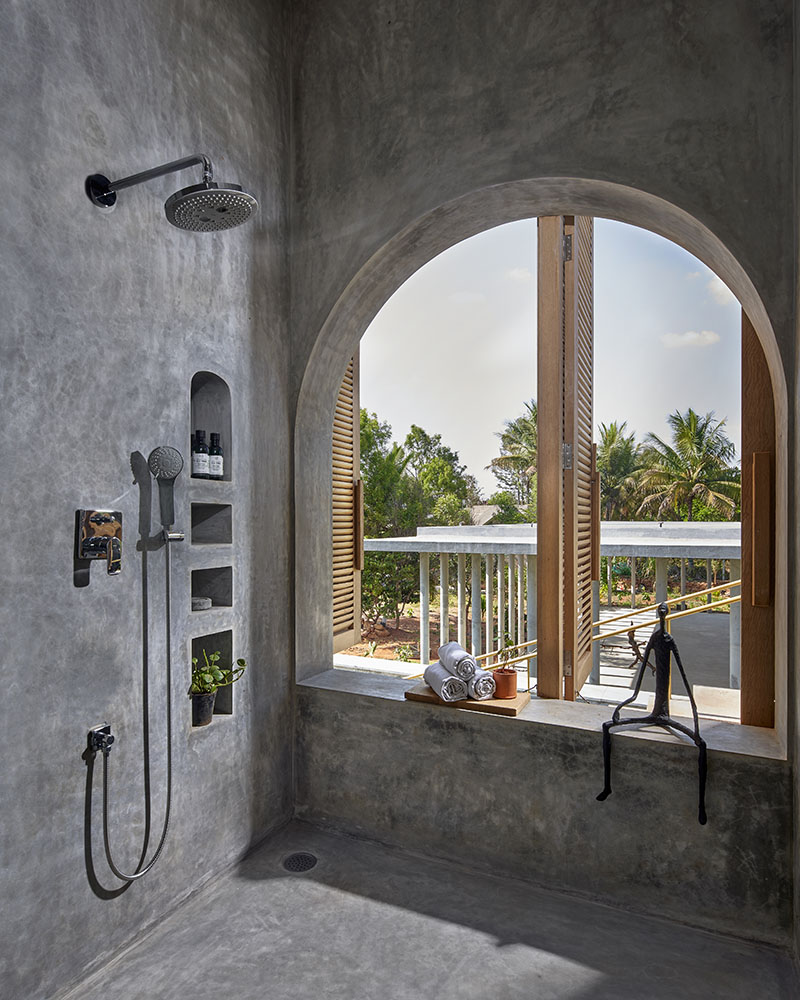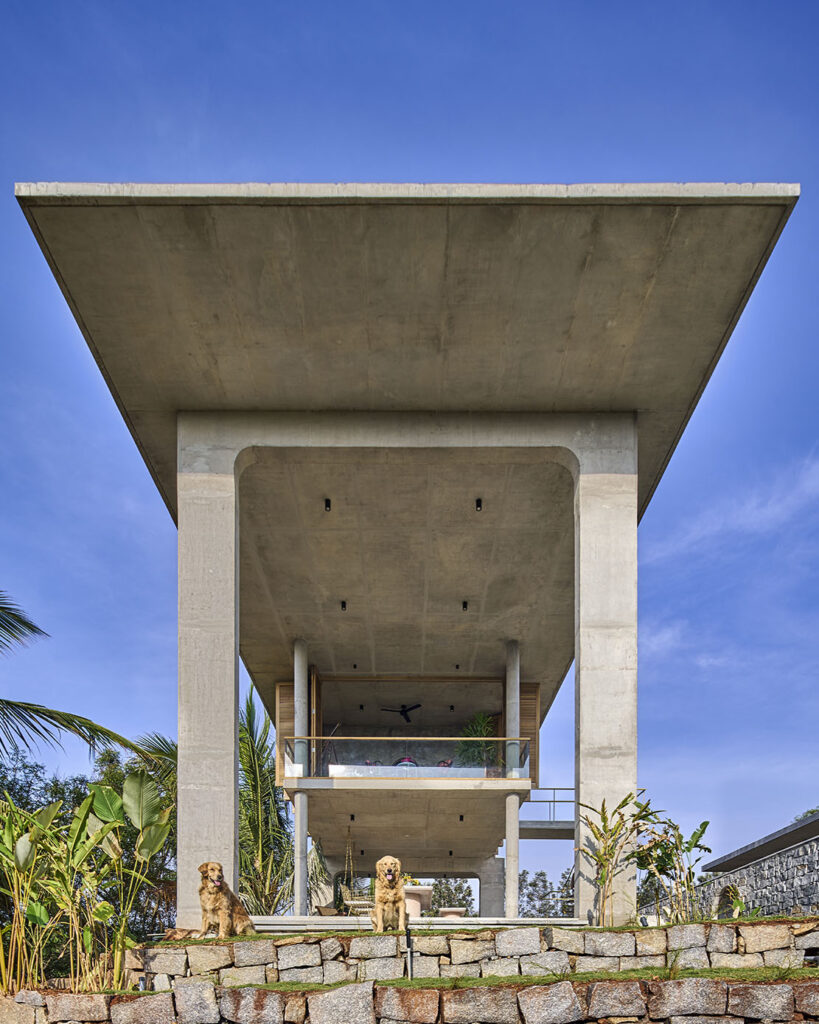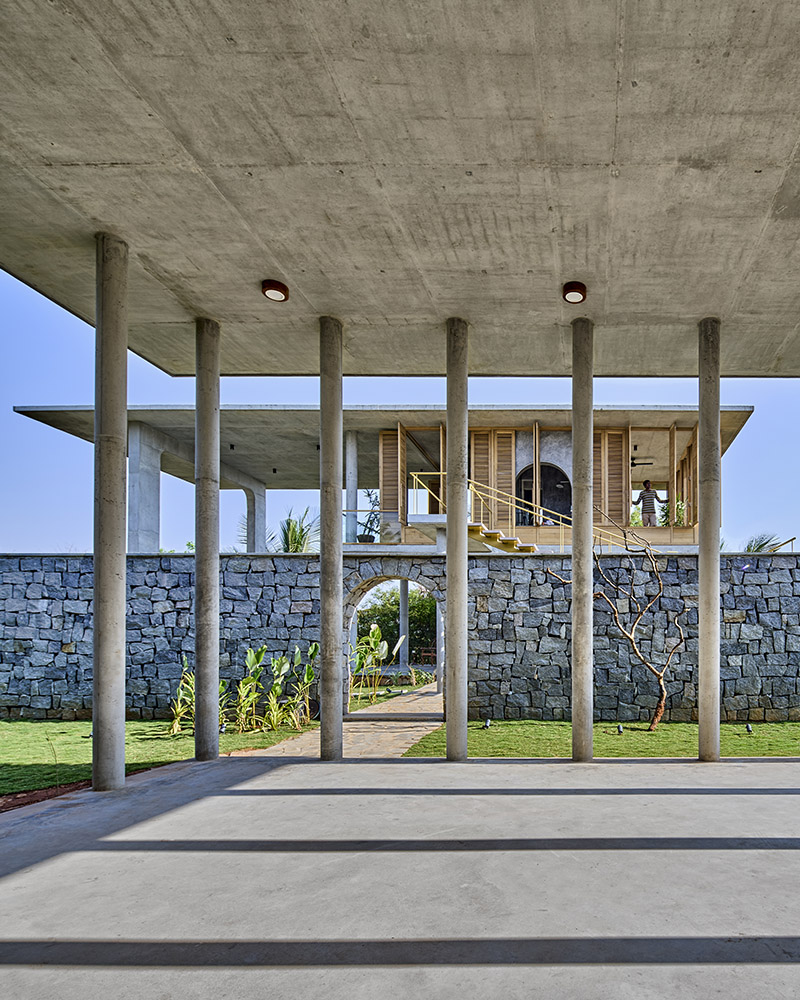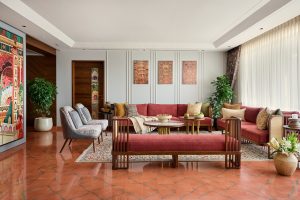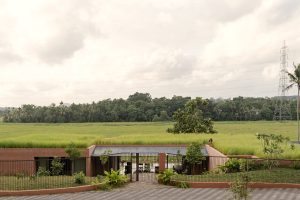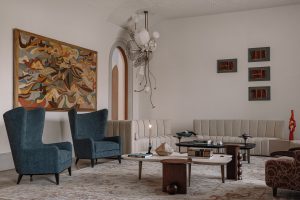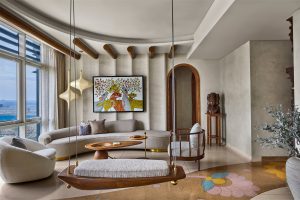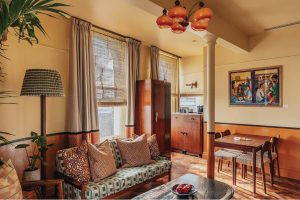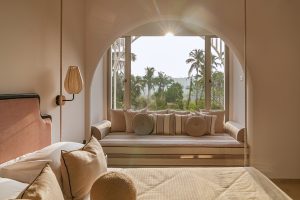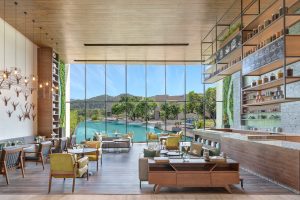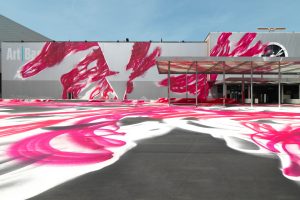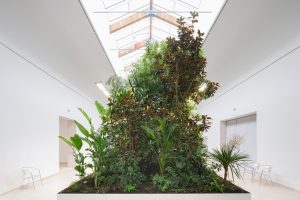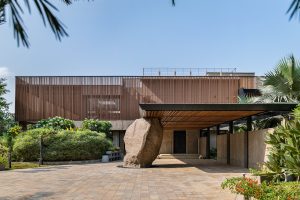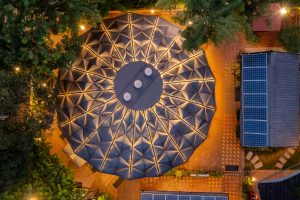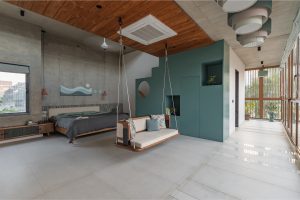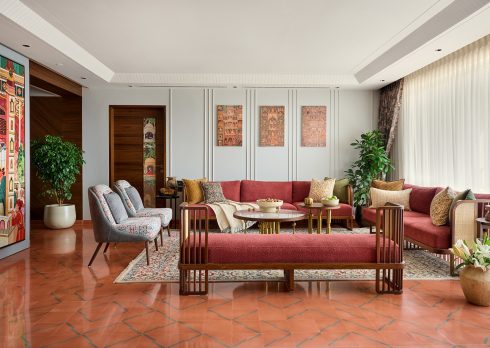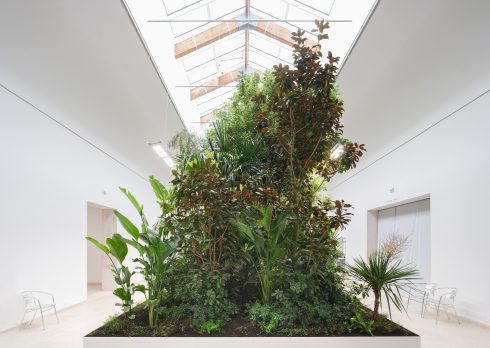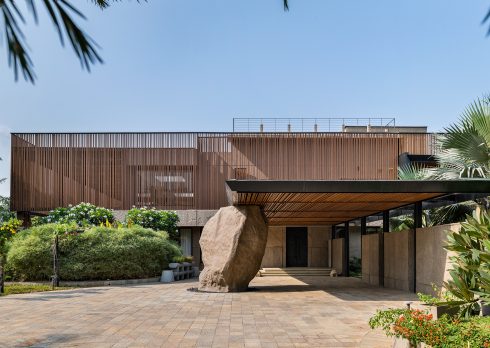This Weekend Home In Rural Bangalore Exemplifies Slow Living
- 14 May '21
- 5:45 pm by Nuriyah Johar
Nestled amidst lush coconut and acacia tree plantations with the grand Savandurga Hill framing its backdrop, this weekend home in rural Bangalore reimagines living in the embrace of nature. Architects Shalini Chandrashekar and G. S. Mahaboob Basha of Bangalore-based firm Taliesyn- Design and Architecture envisioned the home as a built environment that would belong within its context – one that would blend and harmonise, rather than shock and dominate.
“Ksaraah attempts to create a sanctum of rejuvenation away from the urban bustle,” Chandrashekar and Basha tell us. “It is designed to transform continually with nature as the protagonist.”
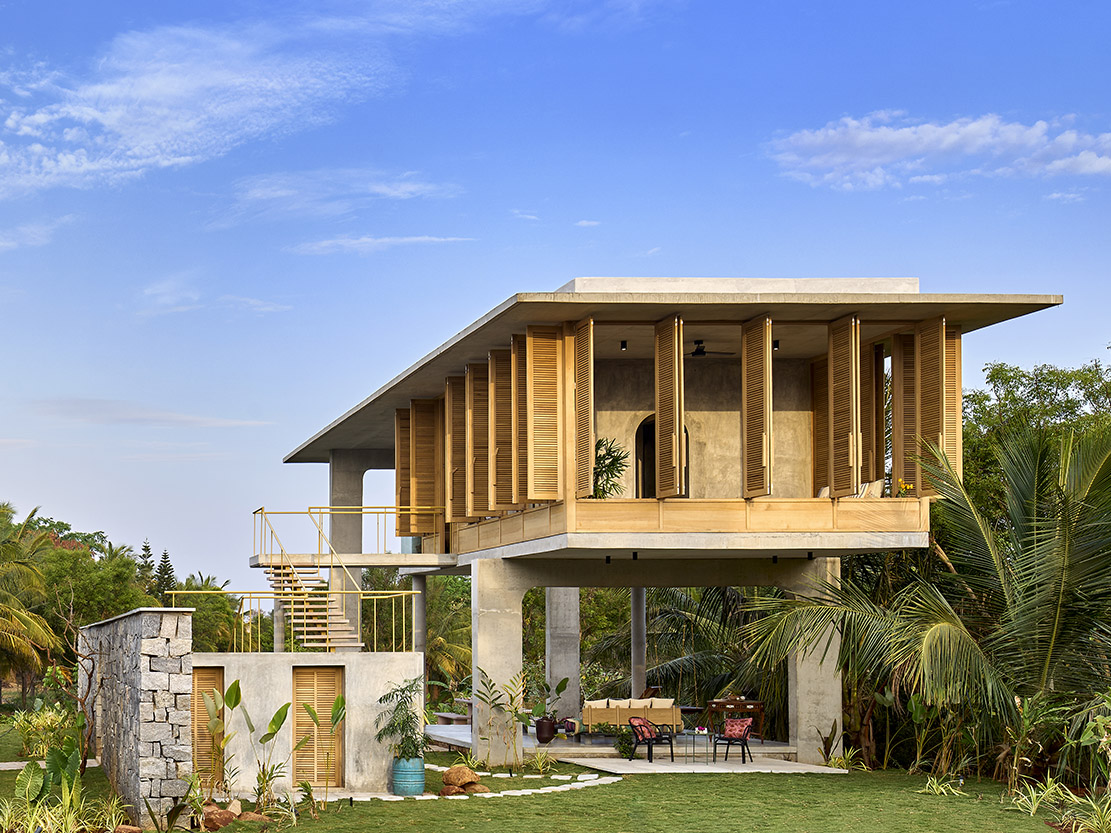
Ksaraah is a two storeyed residence; an interplay of volumes and voids that frames the views of the farms that lie on the horizon. Resting weightlessly on a set of two loft, bevelled arches, it creates expansive column-and-wall free spans with deep overhangs. The communal spaces like the living, dining, and sit-out areas take up the ground floor, whereas the first floor hosts the master bedroom, its ensuite bathing chamber and a private study lounge. Tall, louvered windows in oak wood wrap around the first floor’s perimeter, creating a permeable envelope that invites the outside in, while allowing the users to control ventilation and lighting. A sleek outdoor staircase joins the two levels next to a pool – the epicentre of the residential quarters – its backdrop marked by a feature stone wall. The wall creates a three dimensional site partition and marks the transition between the private and public functions of the house, while establishing a coherence in the visual narrative.
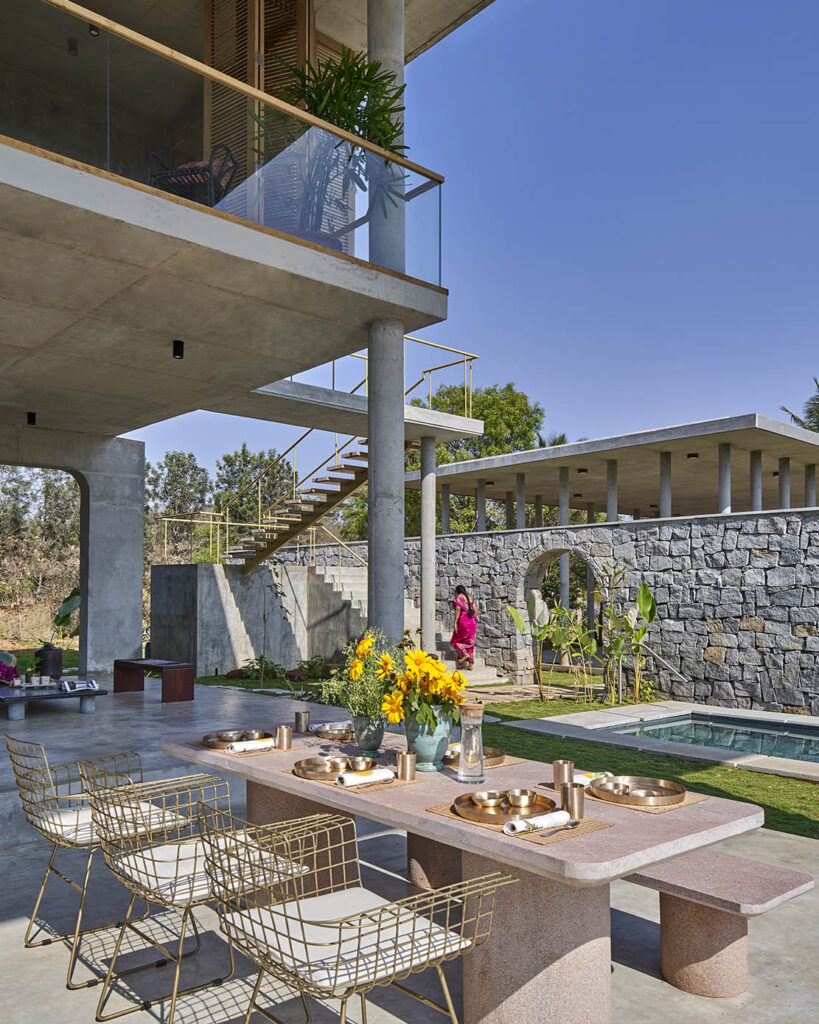
Ksaraah is an architectural symphony of volume, light, shadows, and textures, which are in a state of constant change influenced by the time of day and their specific functions. The louvered facade alters the spatial quality of the interiors with every passing hour. “The design vision for Ksaraah was consciously limited in terms of changing the landscape or the natural occurrences within site to ensure that the processes of shrishti (creation), stithi (sustenance) and samhara (dissolution) continue without any interruption,” the architects explain. “Thus, the spatial arrangement is specifically directed to traverse amidst the landscape, blurring the boundaries between the built and the unbuilt.”
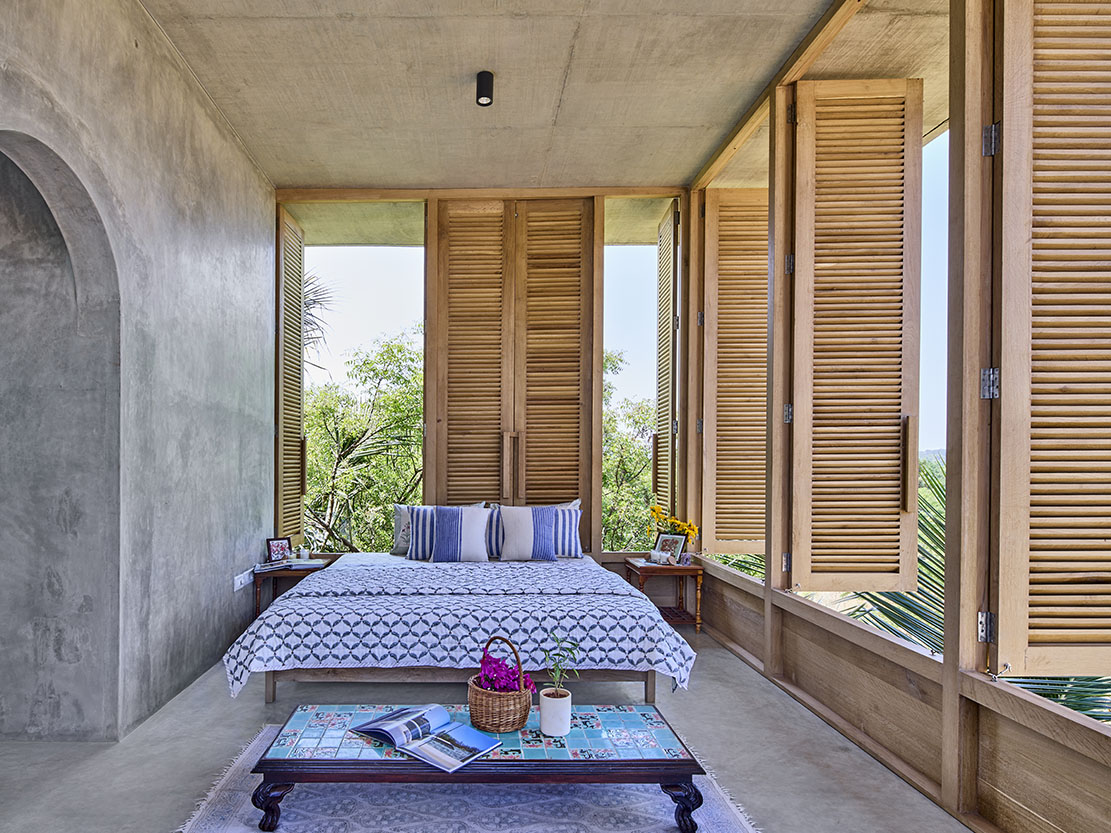
Both contemporary and traditional design elements make up the interiors in balanced proportions – ultimately creating a space that has a timeless appeal; one that will age gracefully and require minimal maintenance. Serving as a bare canvas for self expression, monochromatic concrete and cement finishes feature on both the interior and exterior walls, softened by the warm oak wood of the louvers. Locally sourced stones like Sadarahalli and Pink Magadi further add to the textural richness of the home.
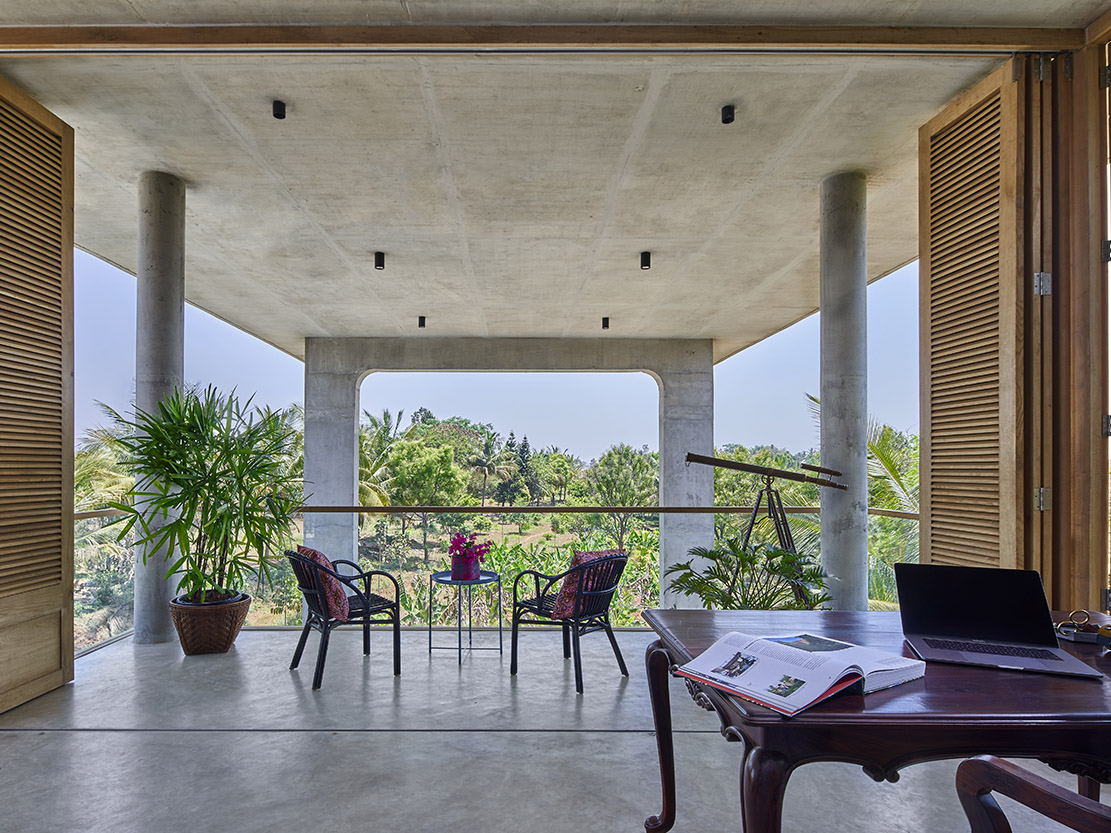
Nods to traditional Indian craftsmanship exist throughout the home – from the khadi bedding to the kansa crockery. Apart from vintage pieces and heirlooms, decor elements from Beruru , Essential Traditions by Kayal, and Ellementry reinforce the design ethos of contemporary traditionalism. A few larger elements like chairs and rugs have been sourced from Gulmohar Lane and Fabindia – brands in line with the aesthetic sensibilities of the space. Largely, antique furniture is used throughout the home, alongside furniture handcrafted from waste stones sourced from nearby quarries.
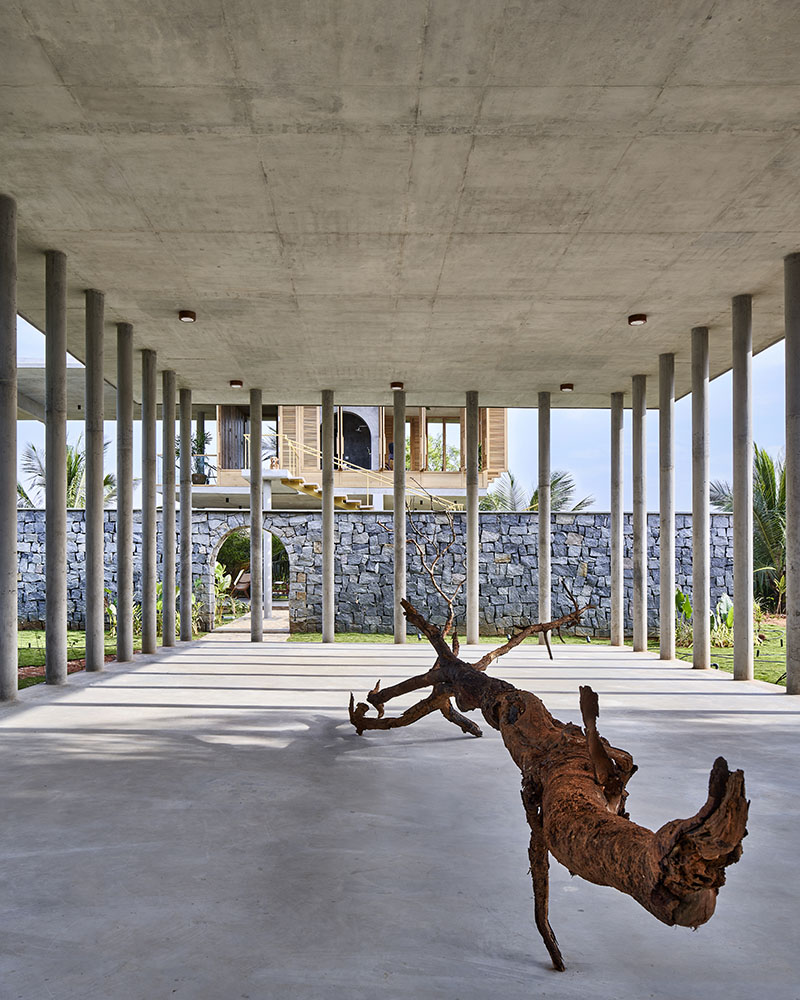
What truly differentiates Ksaraah from the regular weekend homes that dot rural areas, is its lack of indifference to the immediate locality it inhabits. Looking beyond the just the needs of its owners, Ksaraah aims to address the needs of the local community as well. At the heart of the site stands a grand Pavilion that is eighty feet long, composed of rhythmic modules. A dynamic progression of circular columns stipple its perimeter, referencing the surrounding plantations; it is designed to ‘disappear’ once the surrounding trees grow to their maximum heights. A versatile area bustling with energy, the Pavilion serves as a recreational space that can host events ranging from dance recitals to evening soirees, open to all including the local villagers. “The Pavilion has even been used as a classroom during the pandemic by the local school and hosted a play as part of the annual village function jatre,” Taliesyn tells us. The ethos of humanity holds strong in the architectural sensibilities of this project.
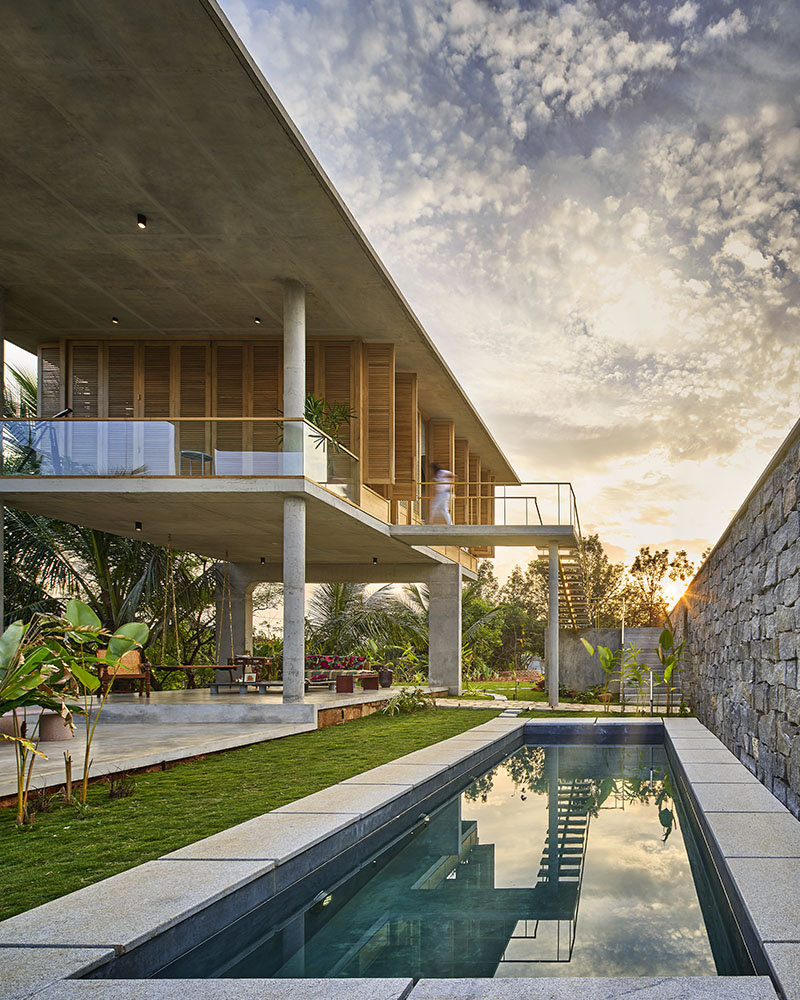
Ksaraah is anchored in a holistic ideal of sustainability. Solar energy powers the entire building. To reduce the need for mechanical air conditioning, unwanted wall envelopes are negated and are instead replaced with plants and trees. Additionally, the pool is designed to catch the flow of the NE-SW breeze which aids in evaporative cooling, and creates a comfortable microclimate on the site. The landscape design is mindful of both the environment and the upkeep it would require. Waste water from the household is recycled and channelled towards farming activities, nurturing the plantations of chikoo, mango, and banana trees on the site. Sculptural trees and flowering species are braided into the existing flora, densifying the greenery that will eventually thrive.
